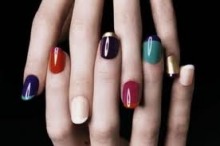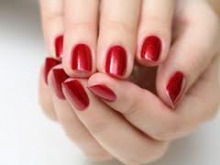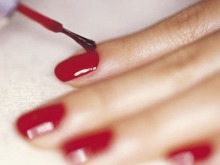You're well-trained in the art of beauty. You know where to drop cash for good quality (foundation, conditioner, eye shadow) and where you can skimp for savings (mascara, shampoo, lip gloss). You also know that having someone else save you the hassle of painting your nails is a must. You know these things not because you're girly or superficial, but because you're female. It comes with the territory.
When it comes to nail shops, you know the true from the tacky. Experience has taught you which places to avoid: the ones that neglect your cuticles and those who don't sanitize their tools. And you know where to find the artists: the ones who do great Chinese characters, lotus flowers and reverse French manicures. You even know that spending a lot for a manicure is a waste of time and money. You discovered long ago that the cheaper joints are faster, more meticulous and better at their craft than their high-end competitors.
And now for some things that you probably don't know. Behold. The manicure is an art as old as ancient Egypt: Cleopatra wore a deep crimson while Queen Nefertiti preferred an opalescent shade of ruby. In Paris in the late 1800s, the first French manicures began to appear on the nails of the wealthy. Max Factor perfected that same look for Parisian women in the 1930s. In the United States, beautiful hands were an indulgence of the well-off: The average cost of a professional manicure in the 1970s was $65.
And now? 43 percent of all nail salons in the United States are owned and operated by Vietnamese immigrants. The explanation is not what you'd expect. The LA Times credits actress Tippi Hedren for creating the current wave of Vietnamese nail artists when, in 1975, she had her manicurist teach the trade to Vietnamese refugees. That's right. Tippi Hedren, the actress who screamed heard head off while being dive-bombed by seagulls in Hitchcock's classic horror flick, The Birds.
+ =So, what does this have to do with you, the beauty expert? A lot. The next time that you get a manicure at a Vietnamese-owned salon (Try a gel, by the way: they last for three weeks and don't chip), think about the person holding your hand in hers. She's likely physically hunched over, leaning in and squinting. She's hard at work to make your fingertips perfect. And she takes great pride in her job. By being there, you're supporting both a business and someone who left behind a lot at home.
What can you do to brighten your manicurist's day? Well, your Vietnamese skills probably don't go beyond pho' ga, and her English may not be the easiest to decipher. If she's reticent, it's not because she's rude; it's simply a language issue. If she's trying to have a conversation with you, chat back, even if you don't understand everything.
Most of all, remember that tips are important. If you're happy with her work, leave 20 percent or more. It means a lot. It's a nice thanks from you, and it's money that will likely be wired home at the end of the month. You're an expert at looking fabulous. And now you're a better consumer, too.





